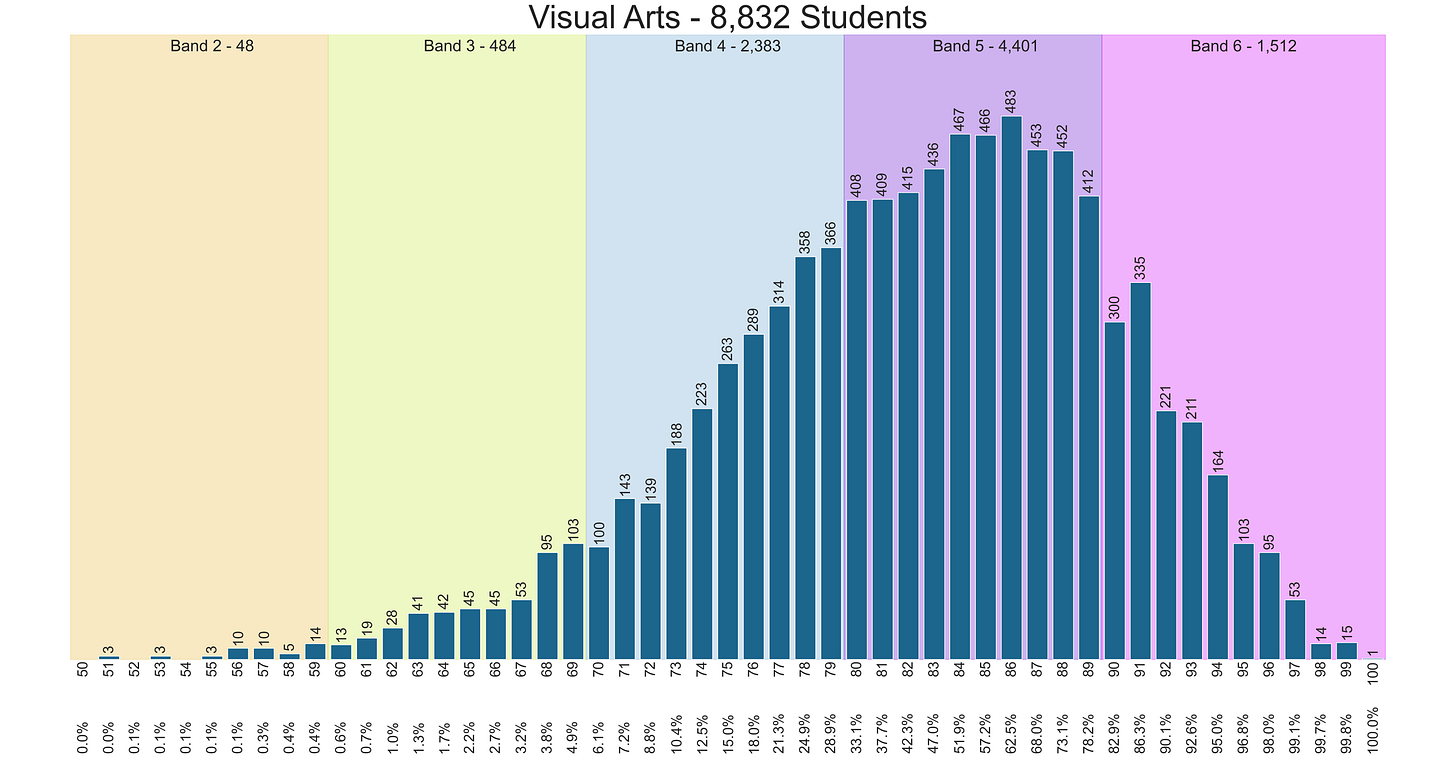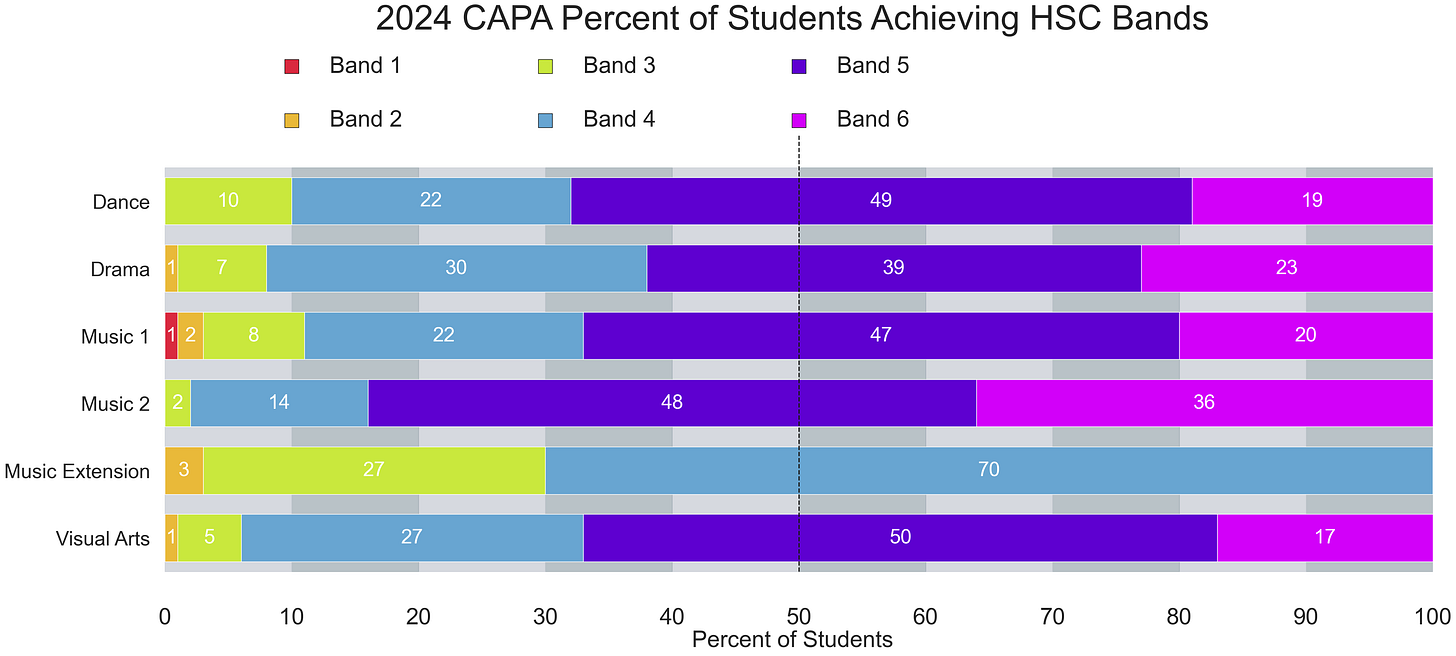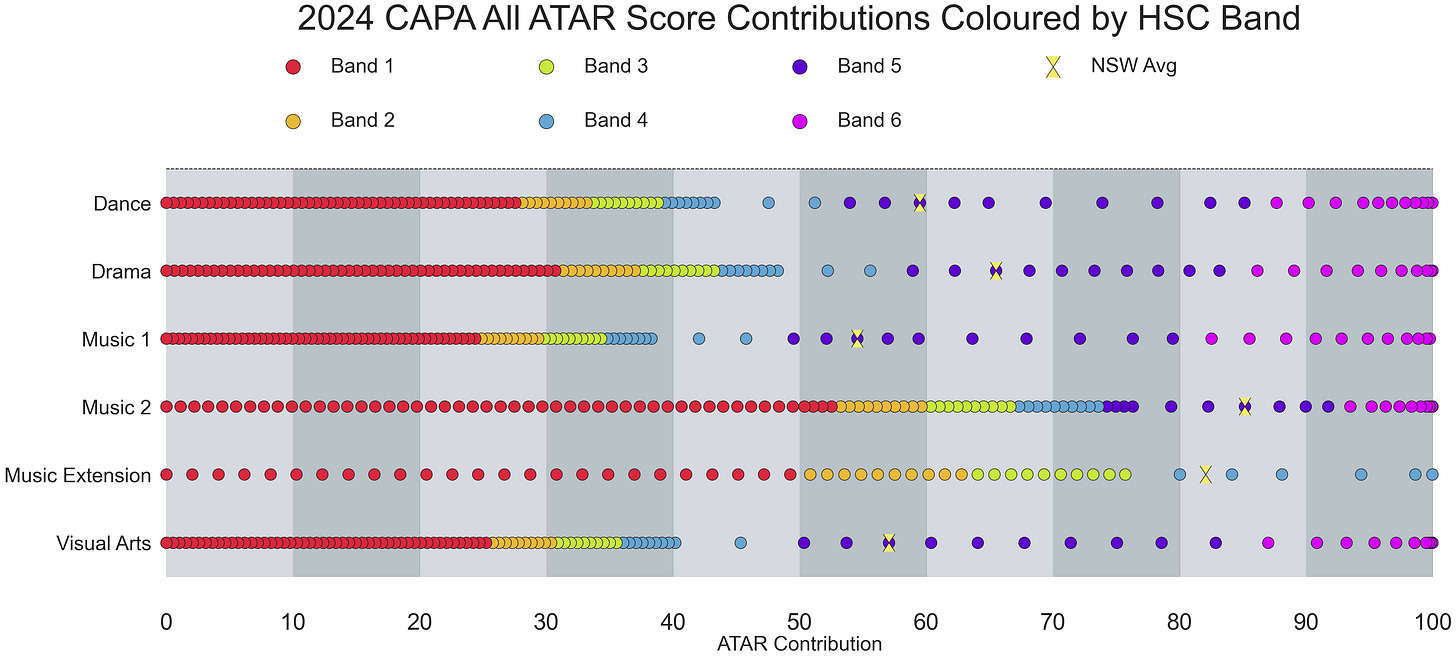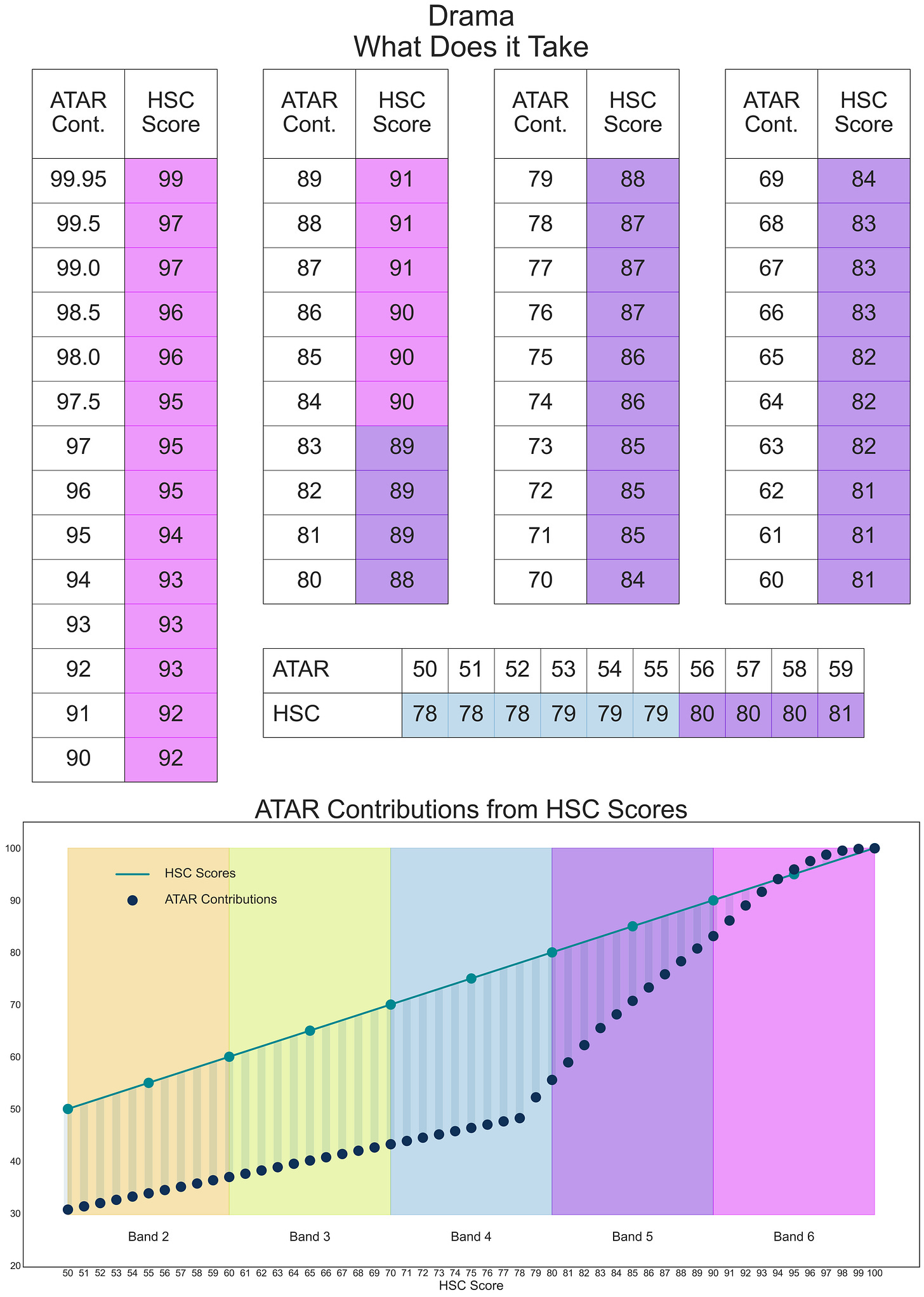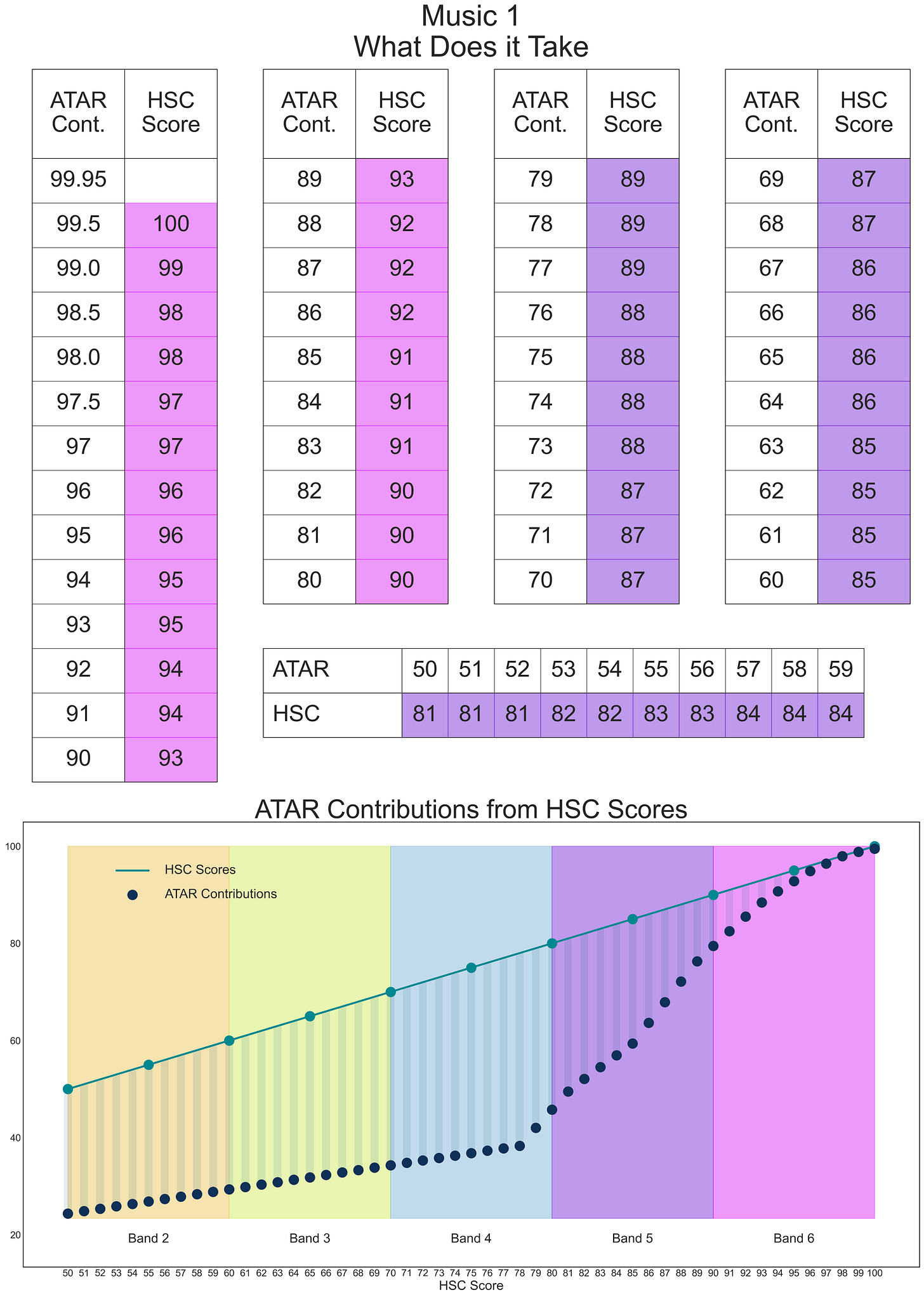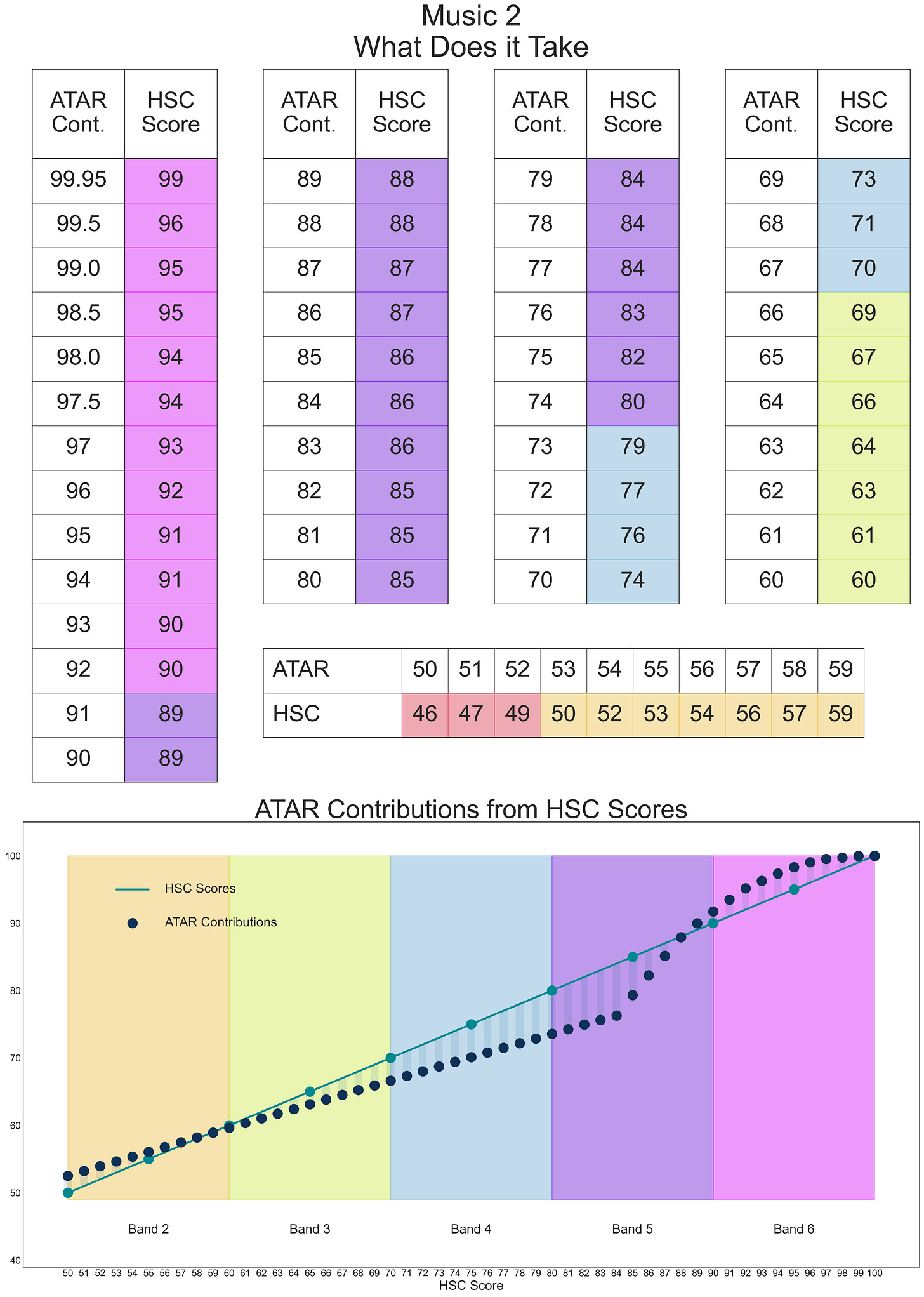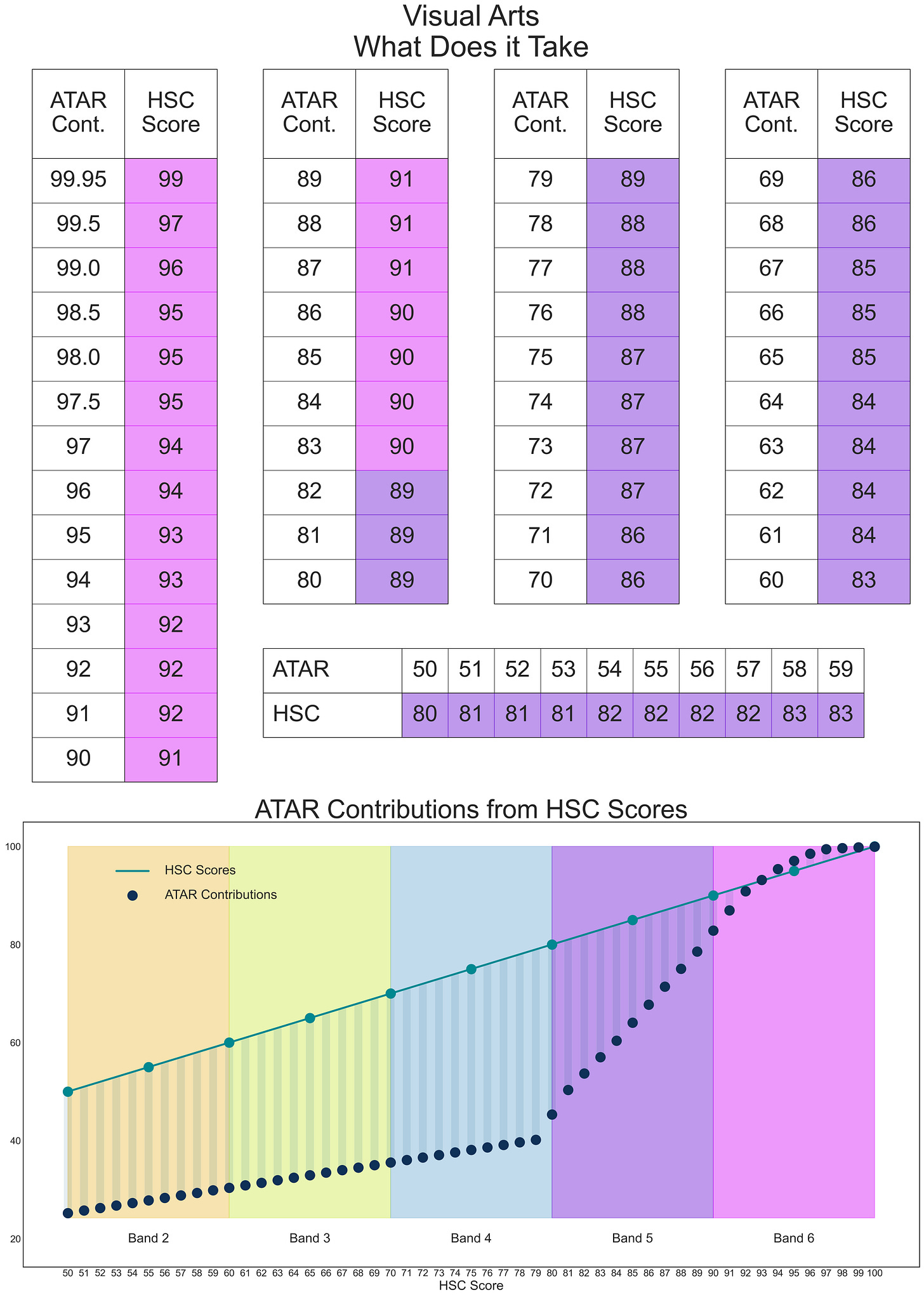Music 1, Visual Arts & Subject Selection
HSC creative Arts subjects have an undeserved bad reputation
I was asked this:
As Head of Performing Arts, I’m already hearing more concern than usual from music teachers about the ATAR implications of choosing Music, particularly with Year 10 subject selection approaching. There’s growing confusion among students and rising frustration from teachers — and a young TikTok creator seems to be fuelling the issue.
What advice would you give to music teachers navigating this period?
I like students studying creative arts. For all kinds of reasons.
Creative arts subjects in the HSC, though, have a poor reputation for looking after student ATARs. This reputation is underserved. There is no inevitable deficit to contributions to ATARs that come from studying creative arts subjects. But there is some risk I think it would be dishonest to avoid talking about.
TL;DR
Music 1, Visual Arts and all CAPA subjects scale fine.
Stay in your lane and make a fuss when others don’t do the same.
Insist on high standards.
Pick your students.
Frame CAPA subjects as an opportunity.
Value readiness above all else.
Gloat about past successes often.
Remind students that Tiktok is a cesspit.
Know how your subjects scale.
Scaling - It’s Difficult to Make Concrete
When we try to understand how subjects scale in the HSC, it makes a lot of sense to compare scaled scores to HSC scores. I do it a little differently, using what I call ATAR contributions. Same process, slightly different measure.
What people tend to do, then, is look at what scaled scores UAC equates to different HSC scores in subjects and then make comparisons across subjects. This isn’t an unreasonable thing to do. The problem with this is that the comparisons don’t always make sense in the direction we’d like.
I’ve written about this at other times, so for now I’m just going to state it without qualification. When we make comparisons between HSC scores and scaled scores we learn a lot more about what NESA is doing at the marking, judging and aligning phases than we do about how a subject actually scales for the ATAR. As such, value judgements about what scales well or not, based on the comparison between HSC scores and how they scale are likely to be unreasonable. Scaling opens a window back into the HSC process. HSC marks tell us nothing about scaling. It’s a one way mirror, I’m afraid.
Do CAPA Subjects Scale Well?
The short answer to this is that they scale fine. There are three important numbers for a subject’s scaling profile. The average, the standard deviation and the maximum scaled score.
Music 1’s scaled average is slightly lower than Visual Arts and both sit in the mid 50s as ATAR contributions. That is, according to UAC, the average Music 1 student in NSW is, on average, working at about a 55 ATAR level in their other subjects. In Visual Arts it’s slightly higher at about 57 or so. Dance is a little higher again at about 59 and Drama at around 65. Music 2 has the highest scaled average of any 2 unit subject in the HSC at around 85, which is higher than Music Extension, at around 82.
I think it would be nice if the Music 1 and Visual Arts scaled averages were a little higher at around 60, but that number has nothing to do with the subject at all, so there’s nothing to be done about that. What it indicates, perhaps, is that, across the state, there is a significant number of lower achieving students in both Music 1 and Visual Arts pulling that average down.
Music 1’s maximum ATAR contribution falls a touch shy of 99.95+ and lands, by my estimates, at around 99.8, and the other subjects all cross the 99.95 threshold. The maximum scores being so high for Music 1 and Visual Arts despite lower averages than are perhaps ideal is testament to the fact that both have a significant number of higher achieving students to pull the standard deviation up despite the average being low.
High HSC Averages and Low Scaled Averages
AKA - The Problem of Perception
This is a big problem affecting the perception of scaling in Music 1 and Visual Arts. Every time I talk about this I get push back, but I still think it’s true (and, I readily admit that I may very well still be wrong). The final mark allocations in HSC terms for both Music 1 and Visual Arts are too generous. Both subjects have an average HSC score in the 80s and I think things would work out much better if those averages were in the 70s. In fact, I think the perception of low scaling is mostly because of the overly generous distributions of marks for average students in the courses.
Here are all marks achieved from Band 2 and up in Music 1 in 2024.
And here they are for Visual Arts
You can see that the distribution is far to the right.
Here’s what band allocations looked like for all CAPA subjects in 2024.
When the average HSC score is in the 80s, but the average ATAR contribution is in the 50s in ATAR terms, the result is that for Music 1 and Visual Arts, that an HSC score of 80 is only worth an ATAR contribution of about 50.
This does not mean poor scaling. This does not mean poor scaling. This does not mean poor scaling.
I can’t stress this enough. I see why it looks bad, but ‘bad’ is not a reasonable value judgement to make. Unfortunately unique might be closer. Although an HSC score of 80 is not worth a lot to a student’s ATAR, because the average HSC scores are so high, there are an awful lot of students achieving HSC scores in these subjects well above 80. In Music 1, 20% of students achieve a Band 6. Music 1 is anomalous. I know that Music 1 and 2 aren’t exactly leveled subjects, but they’re not exactly not either. And Music 1 is the only lower level subject where the proportion of students achieving Band 5 and 6 scores is so high.
CAPA subjects scale fine, but there is a problem of mismatching averages.
Implications on Scaling
All this has one important implication on scaling iN Music 1 and Visual Arts, especially, but other CAPA subjects are prone to it as well.
Here is how CAPA subjects scaled in 2024.
Each dot here shows an HSC score from 0-100 (0-50 for Music Extension). The colour is the band and how far that dot is to the right is what it’s worth as an ATAR contribution (by my estimates).
On the right the pink dots are Band 6 scores. The first pink dot is an HSC score of 90. So in Visual Arts at the bottom, an HSC score of 90 was worth an ATAR contribution of about 87. That is, according to scaling, a student who scored 90 in Visual Arts was working at an 87 ATAR level. Or, if a student could have just one subject in the HSC and still get an ATAR, an HSC score of 90 in Visual Arts would get you an ATAR of about 87.
You can see that for both Visual Arts and Music 1, the first dark blue dot, which is an HSC score of 80, is close to an ATAR contribution of 50. That is surprisingly low. But when you look at the distribution of marks by HSC score aboove, you can also see that in all CAPA subjects an HSC score of 80 is below average.
None of that is the problem here. Those are all just true things. The problem here is the gaps between the dots.
Big Gaps, Big Implications - Positive and Negative
You can see for CAPA subjects how far apart the dots on the above chart are. That, I think, is the biggest advantage and disadvantage these subjects have.
The biggest challenge for Music 1 and Visual Arts is in unrealised potential. For every mark I don’t achieve that I could, the impact on my ATAR will likely be bigger than in my other subjects. This is risk.
But the inverse is also true.
For every mark I work to attain, the positive impact on my ATAR will significantly more than in most other subjects. This is opportunity.
See Opportunity, Mitigate Risk
When students study creative arts, they are presented with an opportunity. That opportunity is to be significantly rewarded by diligent and sustained effort in the study and application of an art they love. The rewards that come from achieving the best results you can in CAPA subjects are significant.
Throughout the Band 5 and low Band 6 range in both Visual Arts and Music 1, gaining just two HSC marks will likely increase your final ATAR by a little more than one whole point. That mightn’t sound like much, but it is. It’s a crazy influence for a small variation.
The opposite is also true. Failing to achieve just two HSC marks that I could have achieved will see my final ATAR drop by a little over one whole point.
Music 2 and Music Extension
I won’t say more about these subjects here, except to say that I think of Music 2 and Extension quite differently to Music 1. What I’ve expressed here so far is far more applicable to Music 1, I think, than it is to Music 2 and Extension. Rightly or wrongly, I see those as elite subjects for elite musicians and they should be entered into carefully on the advice of experienced Music teachers.
Just Answer the Question
None of what’s above actually answers the question. But I find it difficult to answer these kinds of questions without giving context. What I’ve given is still inadequate, but I hope it’s helpful.
The actual question asked was about advice for music (which I’m interpreting more broadly) teachers giving advice for students in choosing Music for the HSC.
So, there are a few things. They mightn’t be popular, but this is what I think.
Music 1, Visual Arts and all CAPA subjects scale fine. Push back on the notion that they don’t. And push hard. Know that there are problems in the system and problems with how these subjects are treated for a variety of reasons. But none of those problems preclude students from attaining positive contributions to very high ATARs from CAPA subjects.
Stay in your lane and make a fuss when others don’t do the same. If, when a Music teacher is asked by one of my students which Maths course they should choose, their answer is anything other than ‘What does your Maths teacher say?’, I’m going to be pretty vocal about it. When any teacher outside of creative arts is asked about by a student whether a creative art can positively contribute to their ATAR goal, it’s unlikely that teacher can answer the question well except to redirect that student to an expert teacher of the subject. Insist that they do. There needs to be some leeway for school leaders and those in roles of giving overarching advice. But you get the idea.
Insist on high standards. I don’t mean in a way that is exclusive with some arbitrary bar or cut off. But creative arts require diligent and sustained effort of practice and study. From the beginning of preliminary until the end of the HSC, the reward for high effort and the application of good advice from experienced teachers is disproportionately positive. Communicate that to students.
Pick your students. Tell the students you want in your subject that you want them. Assure them that you have high expectations of them because you believe in them, that you will support them to meet those expectations and that, if they put in the hard work and follow your direction, they will be well placed to have an excellent chance at this subject being not only rewarding, but also a positive contributor to any ATAR aspiration they may hold. But only say that if you think it’s true.
Frame CAPA subjects as an opportunity for students who are ready and willing to do the work, to have this subject as a high contributor to a high ATAR.
Value readiness above all else. At school I loved Visual Arts because I think my teacher was excellent. She may, had she been given the time, been able to help me grow into a capable artist. But it would be foolish of me to have thought that, from where I was at the end of Year 10, I was ready to succeed at HSC Visual Arts. The HSC is rigid and unyielding. No teacher is a miracle worker and there’s a finite amount of progress you can make in a finite amount of time. Interest is important. Interest sans readiness is insufficient.
Gloat about past successes often.
Remind students that Tiktok is a cesspit and that taking educational advice from content creators is not a recipe for success in a complex system of education. Especially if those content creators are not teachers. Also, tutors are not teachers.
Know how your subjects scale and the HSC marks required to reach fair contributions to different ATAR goals. Advise the students you know accordingly.
CAPA Scaling
Here are some charts for CAPA subjects. If you’re in my Facebook group, you already have access to all these and more. If you’re not, you should join. It’s NSW HSC Discussion for Teachers.



